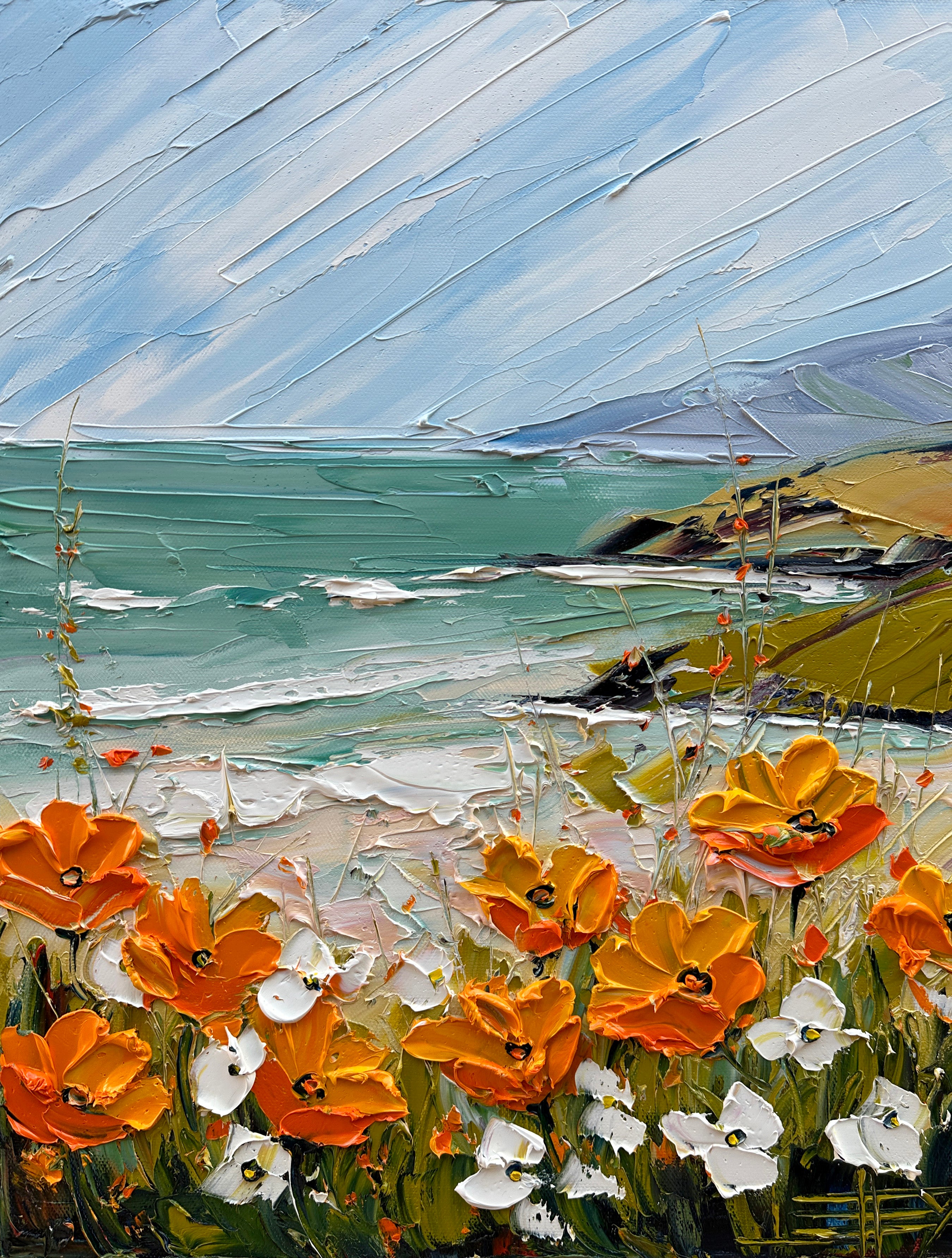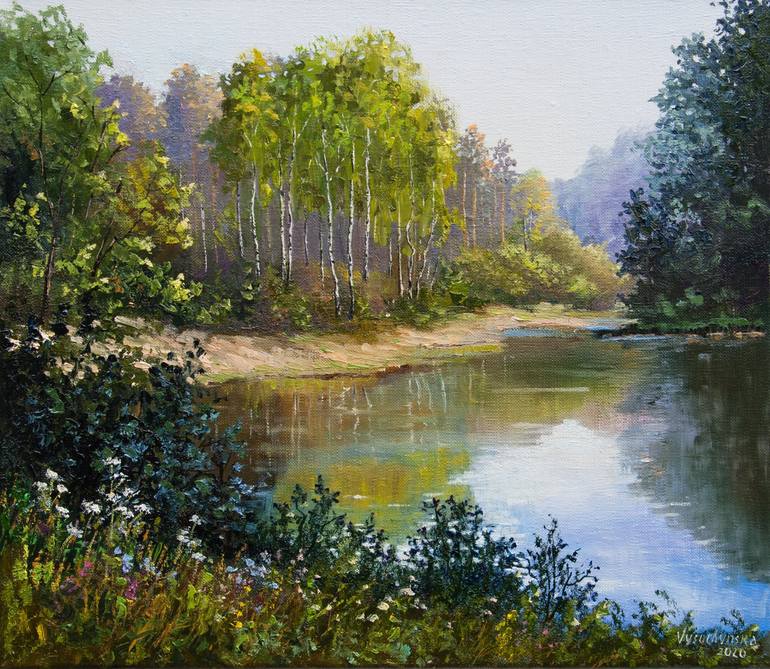The Benefits of Purchasing Oil Paintings: Why They Are a Timeless Financial investment
The benefits of getting oil paints expand beyond plain visual appeals. These art work bring historical significance and social worth, making them beneficial additions to any type of collection. Their distinct structures and methods add to an appealing aesthetic experience. Recognized musicians usually see their work appreciate over time, providing a potential economic advantage. As one discovers the multifaceted factors for purchasing oil paints, the much deeper effects of such a selection become progressively apparent
The Aesthetic Charm of Oil Paints
The allure of oil paintings hinges on their abundant appearances and lively shades, which can change any kind of space into a fascinating atmosphere. These art work have a deepness that mesmerizes audiences, attracting them right into the complexities of the brushstrokes and the interaction of light and shadow. The shiny coating of oil paint enhances the visual experience, enlivening scenes and topics in a means that various other mediums frequently can not accomplish. Furthermore, the selection of designs-- from classic to contemporary-- permits for a varied choice that can enhance any kind of décor. The emotional vibration shared through shade selections and techniques adds a layer of link between the observer and the artwork, making oil paintings not just ornamental items, however effective expressions of creative vision.
Historical Importance and Social Value
Oil paintings function as necessary links to an imaginative heritage, showcasing strategies and designs that have progressed over centuries. They envelop cultural expressions and identities, mirroring the worths and stories of their time. By acquiring these works, individuals add to the conservation of background and the admiration of varied cultural heritages.
Artistic Heritage Conservation
While several may neglect the value of creative heritage, purchasing oil paints plays a vital function in preserving historic and cultural narratives. These artworks function as visual documents of their time, capturing the essence of societal values, traditions, and historic events. By obtaining oil paints, enthusiasts add to the protecting of cultural heritages, ensuring that future generations can learn and value from these artistic expressions. Each piece mirrors the special story of its designer and the context in which it was made. Additionally, the ongoing recognition and display of oil paints in various setups aid to cultivate an understanding of diverse creative movements, enhancing the social landscape. Therefore, investing in oil paintings is not merely a financial decision however an act of cultural stewardship.
Cultural Expression and Identification
Art functions as an effective tool for social expression and identification, showing the diverse stories that form cultures. Oil paintings, particularly, record the essence of social heritage, showing historic contexts and sociopolitical environments. Each brushstroke communicates emotions and stories distinct to particular traditions, permitting visitors to involve with the musician's social history. This link cultivates a feeling of belonging and understanding amongst various areas. Furthermore, oil paintings usually serve as visual paperwork of cultural advancement, showcasing shifts in identification with time. The investment in these art work not only supports artists yet additionally maintains social legacies, making them substantial possessions for collection agencies. Eventually, oil paintings enhance one's appreciation for the ins and outs of human experience and the rich tapestry of cultural identity.
Recognition in Value Gradually

The appreciation of oil paints with time is influenced by various aspects, consisting of historic value patterns that mirror changing preferences and cultural value. Furthermore, the reputation of the artist plays an important function in determining the artwork's market value, typically increasing as the musician gains acknowledgment. Market need fluctuations can even more impact costs, making oil paints a possibly profitable financial investment for collection agencies.
Historic Worth Trends
As enthusiasts seek to purchase concrete properties, the historic value trends of oil paintings expose an engaging narrative of admiration gradually. Historically, oil paints have actually shown a regular higher trajectory in value, specifically for jobs by recognized artists. Economic cycles and market demand have affected these patterns, with durations of boosted passion often resulting in substantial rate rises. Public auction records frequently highlight the impressive returns accomplished by famous pieces, even more reinforcing the notion of oil paintings as sensible long-lasting financial investments. Additionally, social movements and changes in enthusiast choices have occasionally stimulated unanticipated recognition, disclosing that the art market, while somewhat unforeseeable, typically favors quality oil paintings. Consequently, recognizing these historic trends can direct financiers in making informed decisions.
Musician Track Record Impact
While the track record of an artist plays a necessary role in the appreciation of oil paints, it is essential to recognize that this effect can differ significantly based upon several elements. Developed artists, particularly those with a considerable historic or social impact, often tend to see their works value more swiftly. Alternatively, lesser-known or emerging artists might not experience the same degree of demand, affecting their artwork's worth. Furthermore, the musician's capability to develop a consistent body of job and keep relevance in the art globe can influence long-lasting appreciation. Enthusiasts commonly seek works from musicians that are recognized by reputable galleries and establishments, which can even more enhance the value of an oil paint in time, making musician credibility a crucial factor to consider in financial investment choices.

Market Need Changes
How do market need fluctuations affect the admiration of oil paintings over time? The value of oil paints is fundamentally connected to market need, which can vary based upon economic problems, trends, and enthusiasts' preferences. In times of economic prosperity, demand often increases, bring about raised prices as more buyers enter the marketplace. Conversely, during financial downturns, demand might decrease, causing values to stagnate or perhaps decrease. Additionally, the popularity of particular artists can shift, impacting their work's charm. Eventually, recognizing market need is vital for capitalists, as well-managed collections can value substantially in time, mirroring both the skill of the musician and the broader market dynamics. This interaction emphasizes the relevance of strategic purchasing in oil painting financial investments.
Special Textures and Methods
Oil paints astound audiences with their distinct textures and methods, showcasing the musician's proficiency over the tool. The thick application of paint, referred to as impasto, produces a three-dimensional effect, inviting touch and enhancing visual depth. Musicians usually employ various brush strokes, layering, and glazing methods to accomplish luminous shades and detailed details. This flexibility enables for abundant contrasts and refined shifts, making each art work uniquely meaningful. The slow drying out time of oil paint allows artists to blend shades flawlessly, resulting in dynamic tones and smooth gradients. These techniques add to the painting's general character, making it a compelling centerpiece. Each oil paint works as an indicator of the creativity and ability intrinsic in conventional imaginative methods.
Versatility in Home Decoration
The distinct structures and techniques of oil paints not only display imaginative skill however likewise improve their adaptability in home design. These artworks can effortlessly enhance various indoor styles, from modern-day minimal to conventional style. Oil paints function as centerpieces, drawing attention and sparking discussion amongst guests. Their rich shades and depth can integrate with various color schemes, making them adaptable to transforming design patterns. In addition, the psychological resonance of oil paintings can produce atmosphere, whether it be heat in a comfortable living-room or vibrancy in an innovative office. By incorporating oil paints, property owners elevate their rooms, changing them into attentively curated environments that reflect personal taste and creative admiration. Inevitably, oil paintings are an enduring choice for improving home looks.
Link to Prominent Artists
While lots of art kinds can evoke appreciation, buying oil paints often establishes an one-of-a-kind link to distinguished artists throughout history. Having an oil painting allows enthusiasts to involve with the innovative visions of masters like Van Gogh, Monet, and Rembrandt. Each brushstroke symbolizes the artist's feelings, methods, and objectives, offering understanding right into their world. This link goes beyond time, as each piece brings a story that mirrors the historic and cultural context of its production. Collection agencies not only get a work of art but likewise a piece of the artist's heritage. As art lovers discover the stories behind these paints, they get a deeper admiration for the craftsmanship and imaginative motions that formed their advancement, enhancing the worth of their financial investment.
Psychological and psychological Advantages of Art
Art often offers as an effective driver for mental and emotional well-being. The visibility of oil paintings in a living area can stimulate a variety of feelings, from peace to inspiration. Their intricate details and vivid colors provide viewers a getaway, enabling for representation and contemplation. Research studies suggest that engaging with art can decrease stress and stress and anxiety, fostering a feeling of tranquility. Additionally, having initial artwork can produce an individual link, improving sensations of pride and pleasure. This emotional bond often causes a much deeper appreciation of one's environments, changing a home right into a home. Ultimately, the mental advantages of art expand past looks, adding to total psychological wellness and enriching life experiences.

Often Asked Concerns
How Do I Pick the Right Oil Painting for My Area?
Choosing the appropriate oil paint involves taking into consideration the space's shade plan, dimension, and general aesthetic. One need to assess personal preference, the paint's emotional effect, click here and how well it enhances existing decor before deciding.

What Aspects Impact the Value of an Oil Painting?
The worth of an oil painting is affected by variables such as the artist's track record, provenance, historical value, rarity, condition, and market need. Each component contributes to general worth and worth among collectors.
Just How Can I Look After and Maintain My Oil Painting?
To take care of and keep an oil painting, one need to consistently dust it with a soft cloth, prevent direct sunshine exposure, control humidity levels, and take into consideration professional cleaning to protect its vibrancy and integrity.
Are There Certain Artists Understood for Their Oil Paintings?
Various musicians are renowned for their oil paintings - oil paintings for sale. Notable figures consist of Vincent van Gogh, Claude Monet, and Rembrandt, each celebrated for their one-of-a-kind techniques and payments to the art world via lively, textured oil mediums
Where Can I Acquisition Genuine Oil Paints?
Genuine oil paintings can be bought from reliable galleries, art fairs, and online systems specializing in fine art. Collection agencies ought to verify the credibility and provenance prior to making an acquisition to guarantee an important financial investment. Historically, oil paints have demonstrated a constant upward trajectory in worth, particularly for jobs by established artists. While the track record of an artist plays a vital duty in the admiration of oil paints, it is crucial to identify that this effect can differ significantly based on several elements. Oil paints astound viewers with their distinctive appearances and techniques, showcasing the musician's mastery over the medium. While numerous art types can evoke adoration, buying oil paintings frequently establishes a special connection to prominent artists throughout history. The value of an oil painting is affected by factors such as the musician's track record, provenance, historical significance, problem, rarity, and market need.
Comments on “Artist-Made Masterpieces: Oil Paintings for Sale by Creators”